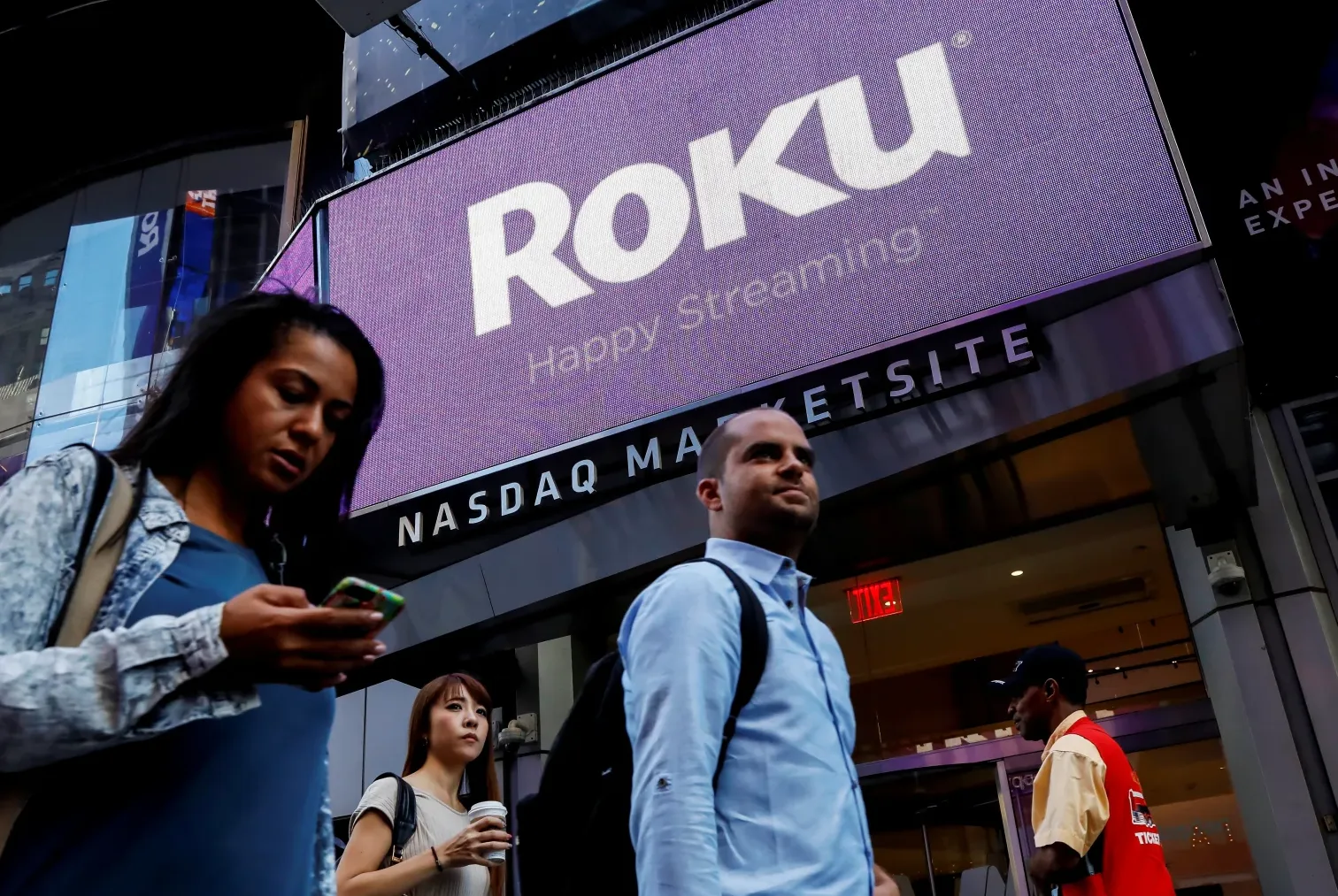2023’s Major Tech Industry Job Cuts
The tech industry is facing significant challenges due to a struggling economy, the ongoing COVID-19 pandemic, and notable business mistakes. As a result, job cuts were observed in 2022, but unfortunately, the number of layoffs has increased in 2023. Keeping track of these developments can be challenging, so we have gathered all the major layoffs in one comprehensive report, which will be regularly updated as the situation progresses.
June

Spotify layoffs
Spotify continued its January layoff plans and announced in June that it would cut 200 jobs from its podcast unit. The move is part of a more focused approach to promoting podcasts with optimized resources for content creators and shows. The company is also merging its Gimlet and Parcast production teams into a revamped Spotify Studios division.
GrubHub layoffs
GrubHub has faced intense pressure from both the economy and competitors such as Uber, leading it to lay off 15 percent of its workforce, or about 400 employees, in June. This comes just weeks after outgoing CEO Adam DeWitt officially left the food delivery service. New chief executive Howard Migdal claims the job cuts will help the company remain “competitive”.
Embracer Group layoffs
Games publishing giant Embracer Group announced layoff plans in June as part of a major restructuring aimed at cutting costs. The company did not say how many of its 17,000 employees would be laid off, but expected the renovations to continue through March. The news comes shortly after Embracer revealed it lost a $2 billion contract with an unnamed partner despite a verbal agreement.
Sonos layoffs
Sonos has struggled to turn a profit recently and is cutting costs to get back on track. The company announced in June that it would lay off 7 percent of the staff, or about 130 jobs. It also planned to dismantle properties and reassess program spending. Chief executive Patrick Spence said “ongoing headwinds” included a contraction in sales.
Plex layoffs
Plex may be many users’ go-to app for streaming both local and online media, but that hasn’t helped its fortunes. In June, the company dismissed approximately 20 percent of the employees, i.e. 37 people. Most of those affected are in its Personal Media unit. Plex is said to be feeling the pinch from the downturn in the advertising market and is eager to cut costs and turn a profit.
may

Shopify Terminations
Shopify’s e-commerce platform played an important role at the height of the pandemic, but the Canadian company is scaling up now that the rush is over. In May, the company laid off 20 percent of its workforce and sold its logistics business to Flexport. Founder Tobi Lütke characterized the cuts as necessary to “pay undivided attention” to Shopify’s core mission and acknowledged that the company needed to step up now that the “stable economic booms” were over.
Polestar layoffs
Polestar delayed production of its first electric SUV (Polestar 3) in May, affecting its workforce. Volvo’s spinoff brand said in May it would cut 10 percent of its workforce to cut costs as it faces lowered production expectations and a rough economy. Volvo needed more time for software development and testing, which also knocked the EX90 out, Polestar said.
SoundCloud layoffs
SoundCloud continued last year’s extensive layoffs by adding more in May. The streaming service announced it will lay off 8 percent of its workforce in an effort to break even in 2023. According to Billboard’s sources, the company hopes to break even in the fourth quarter of the year.
April

Lyft layoffs
Lyft laid off 13 percent of its workforce in November 2022, but took further action in April. The ride-hailing company announced that it would lay off 1,072 employees, or about 26 percent of its staff. It comes just weeks after CEO Logan Green was replaced by former Amazon executive David Risher, who said the company needed to streamline its business and refocus on drivers and passengers. Green previously said Lyft needs to increase its costs to compete with Uber.
Dropbox layoffs
Cloud storage companies are not immune to the current economic situation. In April, Dropbox announced that it was laying off 500 employees, or about 16 percent of its team. Co-founder Drew Houston pinned the cuts on a combination of a rough economy, a maturing business and an “urgent” growing interest in artificial intelligence. While the company is profitable, its growth is slowing and some investments “are no longer sustainable,” Houston said.
March

Roku layoffs
Roku cut 200 jobs at the end of 2022, but it didn’t. The creator of the streaming platform laid off another 200 employees in March 2023. As before, the company argued that it needed to curb rising expenses and focus on projects with the biggest impact. Roku has struggled with a rough economy and the end of the pandemic-induced streaming boom.
Lucid Motors layoffs
If you thought luxury electric car makers would be particularly vulnerable to financial turmoil, you guessed right. Lucid Motors announced in March that it would lay off 18 percent of its workforce, or about 1,300 people. The market remains below production targets, and these cuts are said to help address “evolving business needs and productivity improvements.” Cuts are also common, affecting both managers and contractors.
Meta (Facebook) layoffs
Meta cut 11,000 jobs in the fall of 2022, but it wasn’t finished. In March 2023, the company announced plans to lay off another 10,000 workers to cut costs. The first layoffs affected its recruiting team, but it cut technology teams at the end of April and its business groups at the end of May. Facebook’s owner hopes to streamline operations by reducing layers of management and asking some executives to take over jobs previously reserved for the ranks. It could be a while before Meta’s headcount grows again – it doesn’t expect to lift the hiring ban until it completes restructuring in late 2023.
February

Rivia layoffs
Rivian implemented layoffs in 2022, but it wasn’t enough to help the fledgling EV brand’s bottom line. In February, the company laid off another six percent of its employees, i.e. around 840 employees. It is still struggling to reach profitability, and the production shortfall caused by supply chain problems has not helped matters. CEO RJ Scaringe says the job cuts will help Rivian focus on the “highest impact” areas of its business.
Zoom layoffs
Zoom was central to remote work culture at the height of the pandemic, so it’s no surprise that the company is cutting back now that people are returning to offices. The video calling company announced in February that it would lay off approximately 1,300 employees, or 15 percent of its staff. As CEO Eric Yuan put it, the company wasn’t hiring “sustainably” as it dealt with sudden success. Redundancies are said to be necessary to survive the difficult economy. The management team also offers more than just apologies. Yuan will take a 98 percent pay cut for the next fiscal year, while all other executives will lose 20 percent of their base pay as well as their 2023 bonuses.
Yahoo layoffs
ReturnByte’s parent company, Yahoo, is not immune to layoffs. The Internet brand announced in February that it will lay off more than 20 percent of its workforce during 2023, or more than 1,600 people. Most of the cuts, around 1,000 jobs, took place immediately. However, CEO Jim Lanzone did not blame economic circumstances for the layoffs. Instead, he pitched it as a restructuring of the ad tech unit as it shed an unprofitable business in favor of a successful one. In practice, Yahoo bows out of direct competition with Google and Meta in the advertising market.
Dell layoffs
Pandemic recovery and a bleak economy have hit PC manufacturers particularly hard, and Dell is feeling the pain more than most. It laid off five percent of its workforce in early February, or about 6,650 workers, after a brutal fourth quarter in which computer shipments fell an estimated 37 percent. Dell said previous cost-cutting efforts weren’t enough — layoffs and a streamlined organization were reportedly needed to get back on track.
Deliveroo redundancies
Food delivery services boomed while COVID-19 kept people out of restaurants, and at least some are feeling the pinch now that people are ready to dine out again. Deliveroo is laying off about 350 employees, or nine percent of its workforce. “Reinvestments” bring that closer to 300, according to founder Will Shu. The reasoning is familiar: Deliveroo was quickly hired to deal with “unprecedented” pandemic-related growth, according to Shu, but is said to be cutting costs as it deals with a troubled economy.
DocuSign layoffs
DocuSign may be familiar to many people who have signed documents online, but it hasn’t been spared the effects of the tough economic times. The company announced in mid-February that it would lay off 10 percent of its workforce. Although it does not disclose how many people it represents, the company had 7,461 employees at the start of 2022. Most of those who lost their jobs work in DocuSign’s global field organization.
GitLab layoffs
You may not be familiar with GitLab, but its DevOps (development and operations) platform underpins the work of tech brands like NVIDIA and T-Mobile—and its bottom line is affected by shrinking customer business. GitLab is laying off seven percent of its employees, or about 114 people. Company director Sid Sijbrandij said the troubled economy meant clients were taking a “more conservative approach” to software investments and that his company’s previous attempts to target spending were insufficient to meet those challenges.
GoDaddy layoffs
GoDaddy implemented the layoffs at the start of the pandemic, when it cut more than 800 employees from its retail-oriented social platform. However, in February of this year, it took more extensive measures. The online service provider laid off eight percent of its workforce, i.e. more than 500 people from all industries. Chief Aman Bhutani insisted other cost-cutting had not been enough to help the company navigate an “uncertain” economy, reflecting efforts to integrate acquisitions such as Main Street Hub.
Twilio layoffs
Twilio eliminated more than 800 jobs in September 2022, but it made bigger cuts as 2023 began. In mid-February, the cloud communication brand laid off 17 percent of its staff, or about 1,500 people. Like many other tech companies, Twillio said previous cost-cutting efforts weren’t enough to withstand the unforgiving environment. It also rationalizes layoffs as necessary for making the organization more efficient.
January

Google (Alphabet) layoffs
Google parent Alphabet has been cutting costs for some time, including shutting down Stadia, but it took those efforts a step further in late January when it announced it was laying off 12,000 employees. CEO Sundar Pichai didn’t shy away from the rationale: Alphabet had hired a “different financial reality” and was restructuring to focus on the Internet giant’s core businesses. The decision had a particularly strong impact on the company’s Area 120 incubator, as most of the unit’s employees lost their jobs. Sub-brands such as Intrinsic (robotics) and Verily (health) also laid off a significant portion of their workforce in the days leading up to the layoffs. Waymo has completed two rounds of layoffs, laying off 209 people, or eight percent of its workforce.
Amazon layoffs
Amazon had already outlined its layoff plans last fall, but widened the cuts in early January when it said it would cut 18,000 jobs, most of them from retail and recruiting teams. It added 9,000 layoffs in March, and in April announced that more than 100 gaming workers had left. To no one’s surprise, CEO Andy Jassy blamed both the “uncertain economy” and rapid hiring in recent years. Amazon benefited hugely from the pandemic as people switched to online shopping, but its growth is slowing as people return to in-person stores.
Coinbase Terminations
Coinbase was one of the biggest companies affected by the 2022 crypto market downturn going into the new year. The cryptocurrency exchange laid off 950 people in mid-January, just months after it cut 1,100 roles. It’s one of the steepest relative cuts among larger tech brands — Coinbase laid off about a fifth of its staff. Chief Brian Armstrong said his outfit needed the layoffs to cut operating costs and survive what he previously described as a “crypto winter,” but it also meant canceling some projects that didn’t pan out.
IBM layoffs
Layoffs are sometimes more driven by changes in corporate strategy than financial difficulties, and IBM provided a classic example of this in 2023. The computing pioneer cut 3,900 jobs in late January after shedding both its artificial intelligence-based Watson Health business and its infrastructure management division (now Kyndryl) in the fall. Simply put, these employees had nothing to do when IBM moved to cloud computing.
Microsoft layoffs
Microsoft began the second biggest wave of layoffs in company history when it announced it would cut 10,000 jobs between mid-January and the end of March. Like many other tech heavyweights, it cut costs as customers scaled back spending (especially on Windows and devices) during the pandemic recovery. The cutbacks were particularly painful for some divisions – they are said to have decimated the HoloLens and mixed reality teams, while 343 Industries is believed to be restarting Halo development after shedding dozens of employees. GitHub is cutting 10 percent of its team, or about 300 people.
Terminations by PayPal
PayPal has been one of the healthiest big tech companies, beating expectations in the third quarter of last year. However, it has not been immune to the tough economy. At the end of January, the online payment company announced its plan to lay off 2,000 employees, or seven percent of its total workforce. CEO Dan Schulman argued that the cuts would keep costs down and help PayPal focus on “core strategic priorities.”
Salesforce layoffs
Salesforce set the tone for 2023 when it warned it would lay off 8,000 employees, or about 10 percent of its workforce, just four days into the new year. While the cloud software brand thrived during the pandemic with rapidly growing revenue, it admitted that it hired too aggressively during the boom and was unable to maintain headcount during the economic downturn.
SAP layoffs
Business software powerhouse SAP posted a sharp 68 percent drop in earnings at the end of 2022 and started 2023 by laying off 2,800 employees to keep its business healthy. However, unlike some of the big names in tech, SAP did not blame excessive hiring in the pandemic era for the cut. Instead, it characterized the initiative as a “targeted restructuring” for the company, which expected further accelerated growth in 2023.
Spotify layoffs
Spotify spent the past few years aggressively expanding its podcast empire, but it quickly ended that practice as 2023 begins. The music streaming service announced in late January that it would lay off 6 percent of its workforce (9,800 people worked at Spotify in the third quarter) as part of a restructuring that included the departure of chief content officer Dawn Ostroff. While there were more Premium subscribers than ever in 2022, the company also suffered steep losses – CEO Daniel Ek said it was “too ambitious” to invest before the revenue was there to support it.
Wayfair layoffs
Amazon isn’t the only major online retailer scaling back in 2023. Wayfair said in late January that it would lay off 1,750 team members, or 10 percent of its global workforce. About 1,200 of them were company personnel, whose purpose was to “remove layers of management” and otherwise help the company become leaner and more nimble. Wayfair had been cutting costs since August 2022 (including 870 jobs), but the layoffs helped it break even faster than expected.




